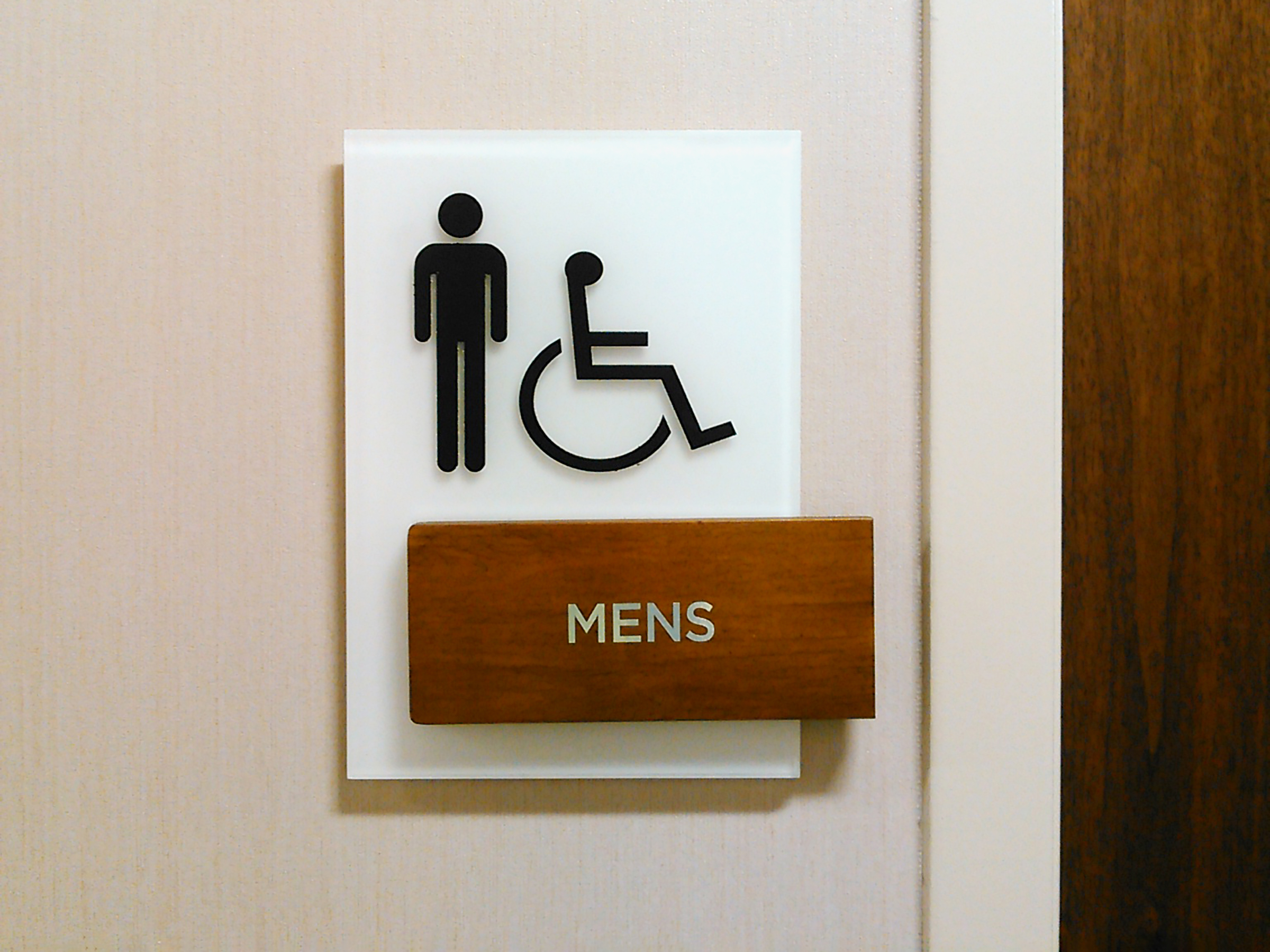Discovering the Secret Attributes of ADA Indicators for Boosted Availability
In the world of accessibility, ADA indicators serve as silent yet effective allies, guaranteeing that rooms are comprehensive and navigable for people with disabilities. By incorporating Braille and responsive elements, these indicators break barriers for the aesthetically damaged, while high-contrast shade systems and clear typefaces provide to varied visual requirements.
Relevance of ADA Conformity
Guaranteeing conformity with the Americans with Disabilities Act (ADA) is important for cultivating inclusivity and equivalent access in public areas and offices. The ADA, enacted in 1990, mandates that all public facilities, employers, and transport solutions accommodate individuals with specials needs, guaranteeing they take pleasure in the same legal rights and chances as others. Conformity with ADA criteria not only satisfies lawful obligations however likewise enhances an organization's credibility by demonstrating its commitment to variety and inclusivity.
One of the key facets of ADA conformity is the implementation of accessible signage. ADA indications are created to make sure that people with impairments can conveniently browse via structures and rooms. These indications need to stick to certain guidelines relating to size, font, color comparison, and placement to guarantee visibility and readability for all. Properly implemented ADA signs aids remove obstacles that individuals with specials needs commonly come across, thus promoting their independence and self-confidence (ADA Signs).
In addition, adhering to ADA laws can minimize the danger of legal repercussions and possible fines. Organizations that fall short to adhere to ADA guidelines might deal with legal actions or charges, which can be both economically troublesome and damaging to their public picture. Hence, ADA conformity is integral to cultivating an equitable atmosphere for every person.
Braille and Tactile Aspects
The incorporation of Braille and responsive elements into ADA signage personifies the principles of availability and inclusivity. These features are critical for individuals that are blind or visually impaired, enabling them to navigate public rooms with greater self-reliance and self-confidence. Braille, a tactile writing system, is important in giving created info in a layout that can be easily regarded through touch. It is normally placed below the equivalent message on signage to make sure that people can access the info without aesthetic support.
Responsive aspects extend past Braille and consist of elevated personalities and icons. These parts are created to be discernible by touch, enabling individuals to identify area numbers, toilets, exits, and various other important locations. The ADA establishes certain standards concerning the size, spacing, and positioning of these responsive elements to optimize readability and make sure consistency throughout various atmospheres.

High-Contrast Color Pattern
High-contrast color schemes play a pivotal duty in improving the presence and readability of ADA signs for people with visual impairments. These schemes are necessary as they take full advantage of the distinction in light reflectance between message and history, ensuring that indications are conveniently discernible, even from a distance. The Americans with Disabilities Act (ADA) mandates using specific color contrasts to suit those with restricted vision, making it a critical facet of conformity.
The efficiency of high-contrast colors hinges on their capability to stand out in different lights problems, consisting of poorly lit atmospheres and areas with glare. Usually, dark message on a light background or light text on a dark history is used to accomplish optimum comparison. For instance, black text on a white or yellow background supplies a raw aesthetic distinction that helps in quick recognition and comprehension.

Legible Fonts and Text Dimension
When considering the layout of ADA signage, the selection of clear fonts and suitable message size can not be overstated. These components are vital for making certain that indicators are accessible to people with visual problems. The Americans with Disabilities Act (ADA) mandates that typefaces must be sans-serif and not italic, oblique, manuscript, very ornamental, or of uncommon type. These requirements aid guarantee that the text is conveniently legible from a range and that the characters are distinct to diverse target markets.
According to ADA guidelines, the click for info minimal message height need to be 5/8 inch, and it should increase proportionally with checking out distance. Consistency in text dimension adds to a natural aesthetic experience, helping people in navigating atmospheres effectively.
Furthermore, spacing between letters and lines is important to legibility. Appropriate spacing protects against characters from showing up crowded, boosting readability. By sticking to these requirements, developers can substantially improve access, ensuring that signs serves its intended objective for all individuals, despite their visual capacities.
Effective Positioning Methods
Strategic positioning of ADA signs is important for maximizing access and making sure compliance with legal requirements. Effectively located indicators lead people with impairments efficiently, assisting in navigation in public spaces. Secret considerations consist of presence, proximity, and height. ADA standards state that signs must be placed at a height in between 48 to 60 inches from the ground to guarantee they are within the line of sight for both standing and seated individuals. This standard height variety is crucial for inclusivity, making it possible for wheelchair individuals and people of varying heights to access details effortlessly.
Furthermore, indications need to be placed adjacent to the lock side of doors to permit very easy identification before Visit Website access. Consistency in indicator placement throughout a center enhances predictability, lowering complication and improving general individual experience.

Verdict
ADA indicators play a crucial function in advertising ease of access by incorporating functions that deal with the demands of individuals with specials needs. These aspects collectively promote a comprehensive setting, underscoring the value of ADA conformity in making certain equivalent access for all.
In the realm of accessibility, ADA signs offer as silent yet effective allies, making certain that rooms are inclusive and navigable for people with impairments. The ADA, passed in 1990, mandates that all public facilities, employers, and transport solutions fit individuals with specials needs, ensuring they enjoy the very same civil liberties and opportunities as others. ADA Signs. ADA indicators are developed to make sure that individuals with specials needs can quickly navigate with structures and rooms. ADA guidelines stipulate that indications need to be placed at a height in between 48 to 60 inches from the ground to ensure they are within the line of sight for both standing and seated individuals.ADA indications play a crucial role in promoting access by integrating features that attend to the needs of individuals with disabilities
Comments on “A Comprehensive Overview to Picking the Right ADA Signs”